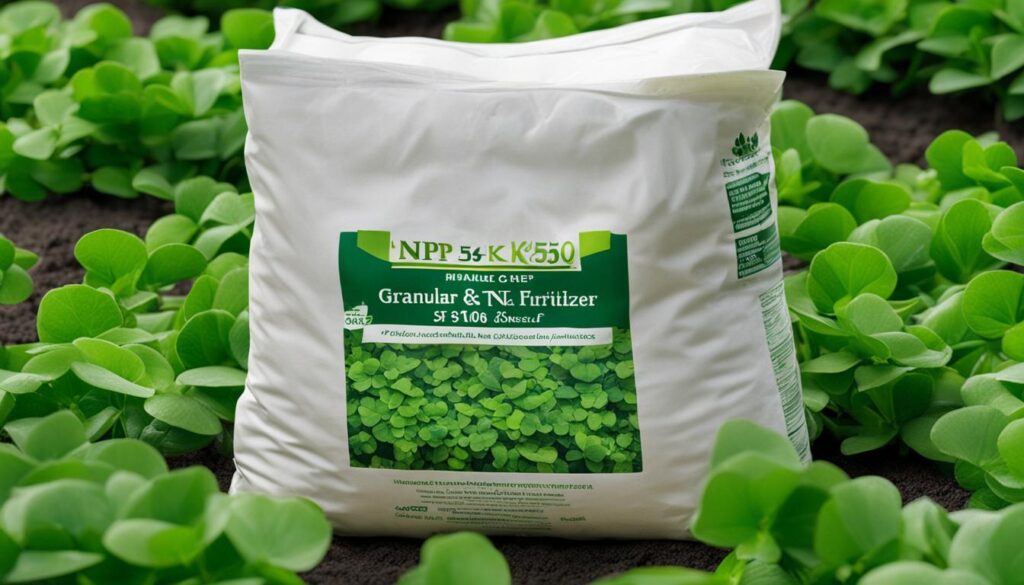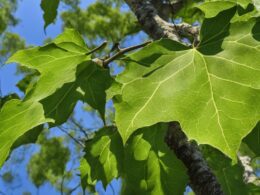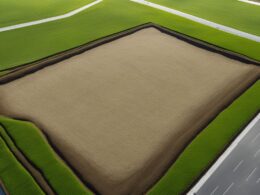If you’ve noticed an excessive amount of clover infiltrating your lawn, you’re not alone. Clover (Trifolium) is a common occurrence in lawns, especially in cooler, northern and midwestern regions of the United States. Understanding the reasons behind the clover invasion can help you take the necessary steps to restore your lawn to its former glory.
Key Takeaways:
- Various factors can contribute to excessive clover growth in your lawn
- Compacted soil, low nitrogen levels, and unbalanced soil pH can promote clover invasion
- Mowing too low, improper watering, and excessive sunlight can also contribute to clover overgrowth
- Aeration, fertilization, and proper lawn care practices can help control clover and promote healthy grass growth
- Consider the benefits that clover offers before deciding on complete removal
Compacted Soil and Clover Invasion
Compacted soil can provide a perfect environment for clover to thrive while impeding the growth of grass. Clover has a thick and interconnected root system that allows it to flourish in compacted and poor soil conditions. Grass, on the other hand, struggles to grow in such conditions, leading to thinning and browning.
Regularly aerating your lawn can help loosen the soil, providing grass roots with the necessary space to breathe and absorb nutrients. Aeration is recommended at least once a year for most homeowners to prevent clover invasion caused by compacted soil.
A vibrant lawn starts with healthy soil. Take the necessary steps to address compacted soil and create an environment where grass can thrive, while keeping clover invasion at bay.
Low Nitrogen Levels and the Proliferation of Clover
Clover, as a nitrogen-fixing plant, possesses the unique ability to extract nitrogen from the air and utilize it to promote its own growth. Conversely, turfgrass lacks this capability and relies on external nitrogen sources. When the soil experiences low nitrogen levels, clover can outcompete grass and become the dominant species in your lawn. To combat this, it is essential to apply a nitrogen-rich fertilizer to your lawn.
A nitrogen-rich fertilizer provides the necessary nutrients to boost the growth of grass, restricting the benefits that clover receives from fixing nitrogen for itself. While synthetic fast-release fertilizers provide immediate results, it is advisable to opt for organic slow-release fertilizers. These not only offer long-term benefits but also promote healthier soil, creating a favorable environment for the growth of grass over clover.
Unbalanced Soil pH and Clover Infestation
Clover thrives in soil with a slightly acidic to neutral pH range of 6.0 to 7.0. If your lawn’s soil is either too acidic or too alkaline, it can create an environment conducive to clover infestation. To determine your lawn’s pH level, conducting a soil test is crucial. This test will provide valuable insights and enable you to make the necessary amendments.
If your soil is too acidic, you can raise its pH by adding lime or wood ash. Conversely, if the soil is too alkaline, the pH can be lowered by adding compost or sulfur. By achieving a balanced soil pH, you can discourage clover infestation and promote the growth of grass, creating a healthy and thriving lawn.
Mowing Practices and Clover Encroachment
Mowing your lawn is an essential task for maintaining its health and appearance. However, improper mowing practices can inadvertently create an opportunity for clover encroachment. If you mow your lawn too low, you risk stressing the grass, making it more susceptible to clover invasion.
When you mow at a higher setting, the taller grass can shade out the lower-growing clover, effectively preventing its growth. To discourage clover encroachment and promote healthy grass growth, it is recommended to set your mower to the highest deck setting and mow your lawn at a minimum height of 3 inches.
Another essential rule to follow is the one-third rule. This rule involves removing no more than one-third of the grass height during each mowing session. By adhering to this rule, you avoid excessively stressing the grass and creating an environment conducive to clover infestation.
Proper mowing practices not only prevent clover encroachment but also contribute to the overall health and vibrancy of your lawn. So, remember to give your grass the preferred height it needs to thrive and keep those pesky clovers at bay.
As discussed, understanding and implementing proper mowing practices can significantly reduce the risk of clover encroachment in your lawn. By following the recommended mowing height and the one-third rule, you create an environment that supports healthy grass growth while minimizing opportunities for clover to establish itself.
Watering Habits and Clover Resilience
Proper lawn watering is essential to maintain a healthy and vibrant lawn while minimizing clover resilience. Incorrect watering habits can create conditions that favor clover growth and allow it to thrive, outcompeting your grass. Whether you underwater or overwater your lawn, it can lead to various issues that encourage clover invasion.
When you underwater your lawn, the grass tends to become wilted and weak. It lacks the necessary moisture to grow and compete against the drought-tolerant clover. As a result, clover can quickly establish itself and take over your lawn, leaving you with an undesirable clover-filled landscape.
On the other hand, overwatering your lawn can also contribute to clover resilience. Excessive watering promotes shallow root growth in your grass, making it susceptible to diseases and soil compaction. Additionally, overwatering creates a moist environment that favors the development of broadleaf weeds, providing more opportunities for clover to invade.
To maintain a healthy balance and minimize clover resilience, it’s important to adopt proper lawn watering practices. Aim to provide your lawn with 1-1.5 inches of water per week. Ideally, you should water your lawn in one or two deep soakings rather than frequent shallow watering. This encourages deeper root growth and helps your grass become more resilient to drought conditions.
Timing is also crucial when it comes to watering your lawn. Watering in the morning, preferably before 10 a.m., allows your grass to dry before nighttime and reduces the risk of disease. This timing also ensures that your grass roots receive a healthy soak, enabling them to withstand drought and compete more effectively against clover.
Remember, maintaining proper watering habits is vital to limit clover resilience. Finding the right balance between providing sufficient moisture for your grass and avoiding excessive watering will help create conditions that discourage clover invasion and promote a lush, clover-free lawn.
How Can Dutch Clover Help Control an Overload of Clover in My Lawn?
Dutch clover is a great solution for controlling an overload of clover in your lawn. When used strategically, dutch clover can out-compete other clover species, helping to naturally reduce their presence. This method not only helps with lawn beautification but also benefits the overall health and appearance of your yard.
Conclusion
Dealing with excessive clover in your lawn can be frustrating, but by addressing the underlying issues that have led to its overgrowth, you can restore your lawn’s health and curb clover invasion. Understanding factors such as compacted soil, low nitrogen levels, unbalanced soil pH, mowing practices, watering habits, and sunlight exposure is crucial in taking appropriate action.
While clover is often seen as a weed, it actually offers several benefits for your lawn. It acts as a natural fertilizer, fixing nitrogen in the soil and promoting healthy grass growth. Clover also helps prevent the growth of other weeds, retains moisture in the soil, increases pollinator activity, and reduces the need for excessive watering and mowing.
If you prefer a clover-free lawn, there are various methods for removing clover, including the use of weed killers, herbicides, or organic alternatives. However, it is important to weigh the pros and cons of removing clover before making a decision. Consider the benefits it brings to your lawn and the potential impact on pollinators and the environment.
To restore your lawn and prevent future clover invasion, consider implementing the following tips: properly aerate your soil to reduce compaction, ensure adequate nitrogen levels through the use of appropriate fertilizers, maintain a balanced soil pH, mow at the right height to promote grass growth, and water your lawn properly to discourage clover resilience.











